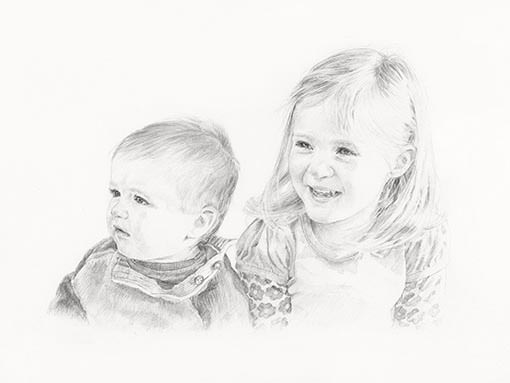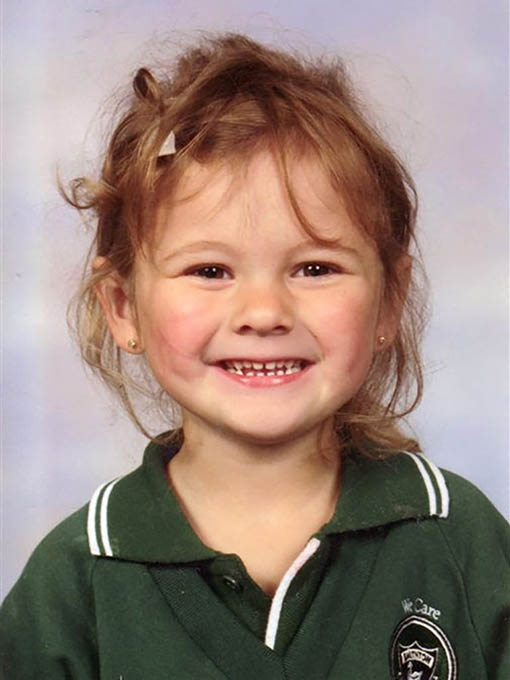Photo reference
When drawing or painting a portrait from a photograph, the photo needs to be a good substitute for the subject sitting right in front of me and therefore it needs to be large and sharp enough to provide a similar level of detail. This page will give you lots of information about what sort of photo I’ll need in order to create a good portrait.
How many photos I need
In order to create a very accurate likeness of a subject I haven’t met in person, I make a fairly exact copy from one key photograph. I will work with you to choose the best photo for this main reference image.
However a single photo can sometimes be slightly misleading and so to make sure I get a full impression of the subject’s appearance, it’s useful to see a couple of extra photos – even for an animal portrait. These can be fairly basic snaps, and don’t need to have the quality of the main ‘key’ image.
What to take the photos with
We tend to take most of our photos on our phones today, and I’m no exception. However photos taken on a phone camera – even the latest iPhone – are unlikely to be suitable for me to work from, so I’ll probably ask you to take some more with a proper digital camera and find a new favourite. My portraits are fairly detailed and I need to be able to zoom right into the photo and see the finer detail of the subject’s features. I much prefer to work from a digital file, rather than a printed photo.
You certainly don’t need an expensive camera for this, or any photography skills! Even the cheapest ‘point and snap’ digital camera will take larger and sharper photos than a phone camera. Please note also that photographs downloaded from social media are not suitable either as they are compressed and pixelated.
SOME OTHER OPTIONS
- School photos are a great option because they are large, close-up and sharp. You can usually request the original digital file from the photographer which is easier for me to work from than a printed copy.
- Professionally taken photos are also ideal. Sometimes people get pictures taken specifically for the portrait.
Go for a close-up
When taking your photograph, try to get a good close-up. Working from a photo where the subject appears small or blurry is like trying to draw or paint someone who’s half way down the road instead of in front of you! Don’t be afraid to zoom in – unless I’m doing a full body portrait I won’t need to see further down than their waist. Just remember not to cut off the top of their hair. Here are some examples of some ideal photos which all fill the frame nicely.
Here are some tips to help you take a good photo for a portrait:
- Natural light is always best. Artificial light can often cause graininess, so aim for daylight to take your snaps.
- Taking your photos out of doors is ideal, but preferably avoid being in very bright sunlight which will make the subject squint and produce strong shadows.
- Don’t worry about the background, as I will just ignore this (unless you actively want it to be included)
- For a pet photo, remember to remove the collar if you don’t want me to include it in the portrait.
Photographing children can be difficult! As a parent myself I know it isn’t easy to get them to pose, as they quickly tire of co-operating and start pulling silly faces. If you don’t get lucky with a nice picture right away just keep your camera handy for a few days and keep on taking shots, even when they aren’t expecting it.
The original photo reference really is key to how the final portrait will turn out, so getting the right image is worth the effort even if it takes a few attempts. Feel free to email any number of images over to me and I can advise you on which I think would be the best options.
What I can change from your original photo
You’re never likely to get a single, absolutely perfect photograph and there are certainly aspects that I can change when I create your portrait from it.
I can easily do any of the following: tidy up hair (or fur) a bit, ignore dribble/eczema/food around a child’s mouth or sunburn from their cheeks, or straighten or smooth their clothing. In fact I’ll probably do this without you needing to ask! However I’ll still talk to you about your key photo in advance because although I’m happy to make amendments once you’ve seen the scan of the portrait, it’s always preferable to know exactly what you’d like from your portrait before I begin work.
And what I can’t:
It’s not possible for me to take a head from one photo and put it onto a body from another one. I can’t completely change someone’s expression – for example I could very slightly turn up the corners of someone’s mouth but I can’t turn a solemn expression into a wide smile, whilst trying to maintain a good likeness at the same time.
I’m also not able to make drastic alterations to clothing (such as inventing new garments) Taking new photos specifically for the portrait is a good opportunity to put a child in the clothes you’d like them to appear in, so keep this in mind if you do a little photoshoot.
Think too about how you want the subject’s hair to appear, because I’m not able to invent a new hairstyle for them or change their hair drastically if you see the final scan of your portrait and suddenly wish their hair had been different.
Joint portraits


I’m often asked if I can assemble two (or more) subjects on the same page, drawn from different photos. To be honest I don’t feel that this ever results in a satisfactory portrait, because when working from photos taken at different times the lighting and tones will not match and it’s hard to unify them to produce a coherent and convincing image. For a joint portrait I’d therefore always advise taking a new photograph of the two subjects together.
If you are doing a photo shoot specifically for your portrait and have taken photos of two people (or pets) together it may be possible to ‘mix and match’ the subjects from different pictures, because the lighting and the tonal quality will be the same in both photos.
Next: select your medium: read more about pencil portraits or watercolour portraits




